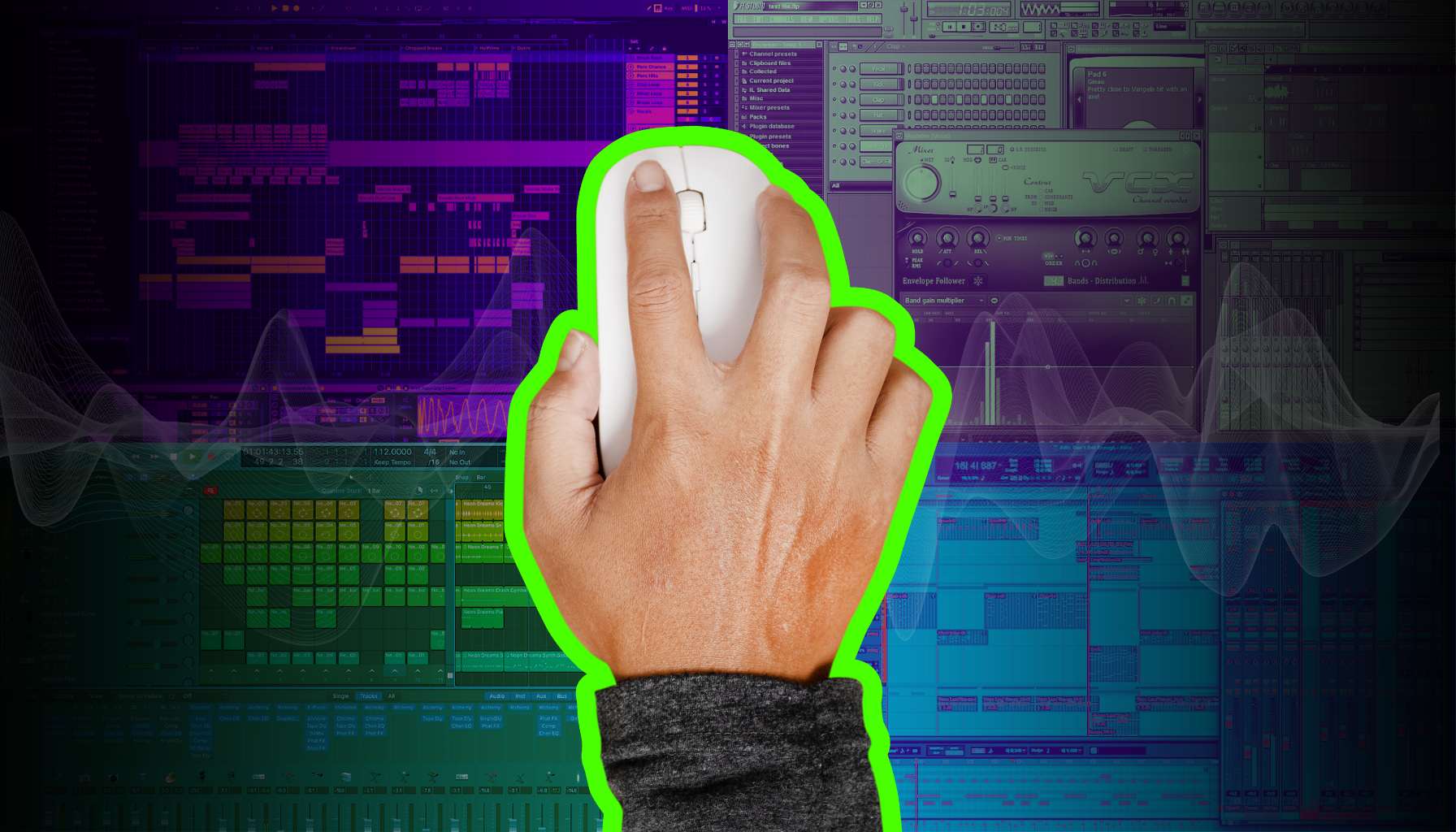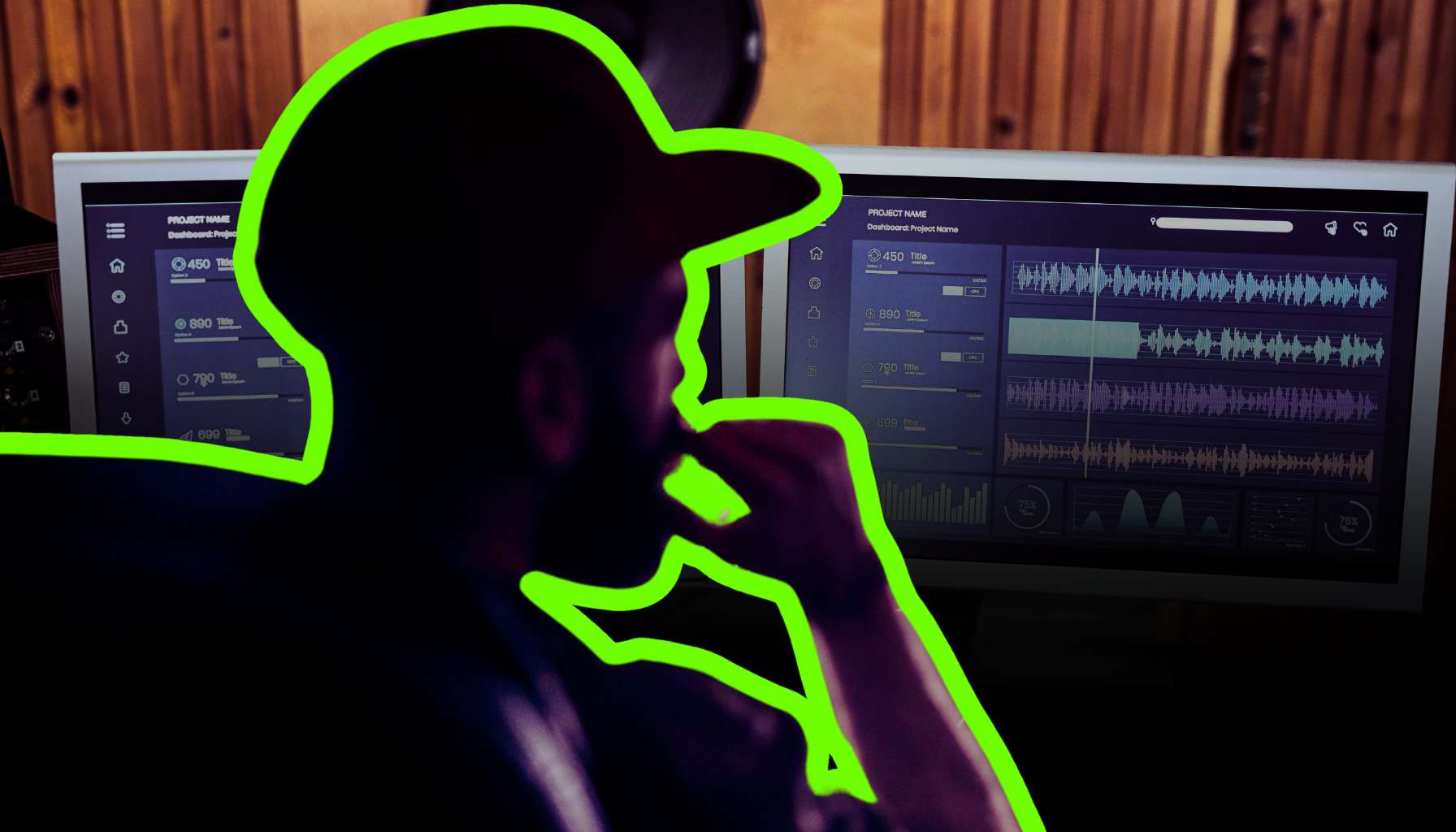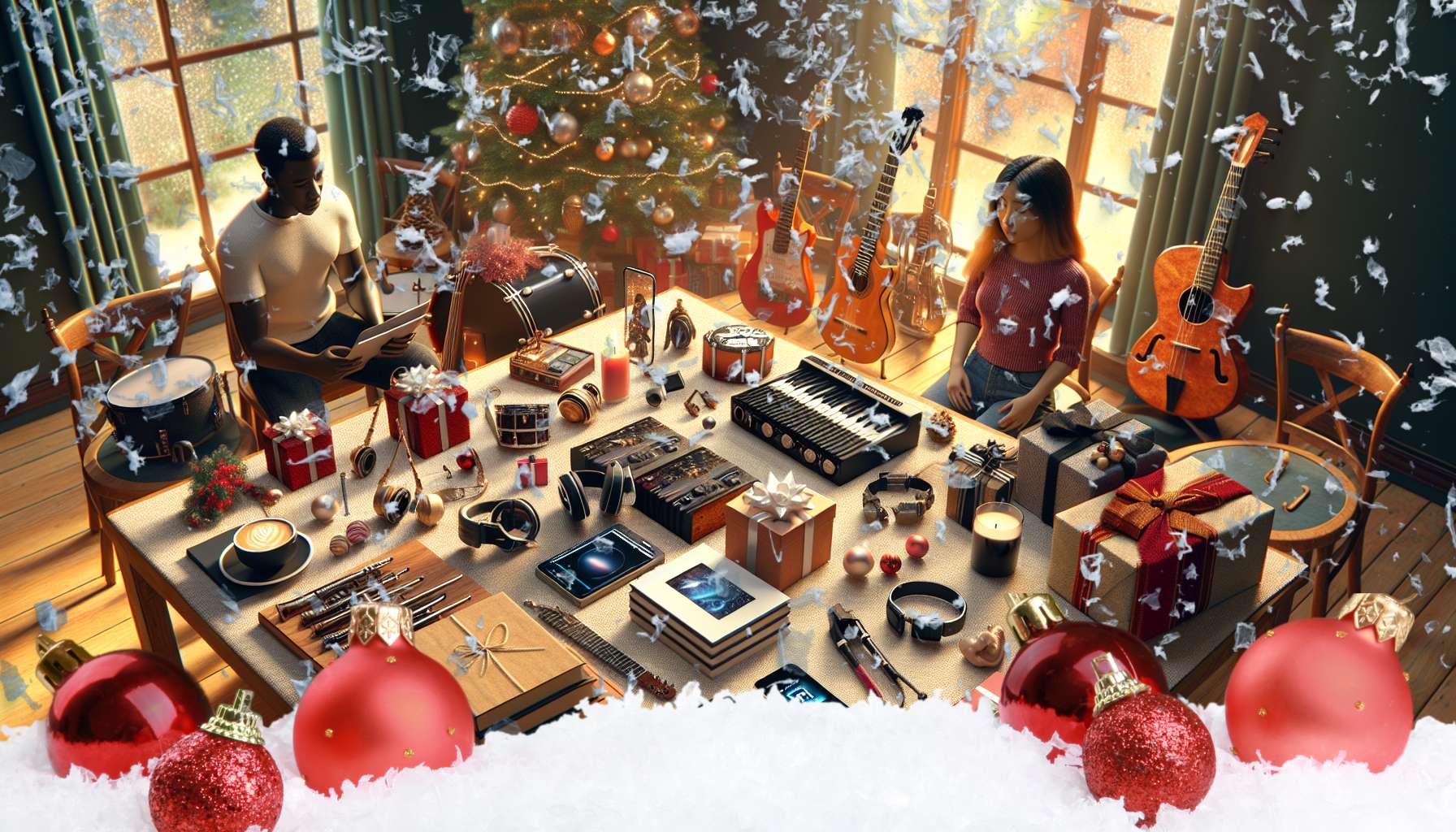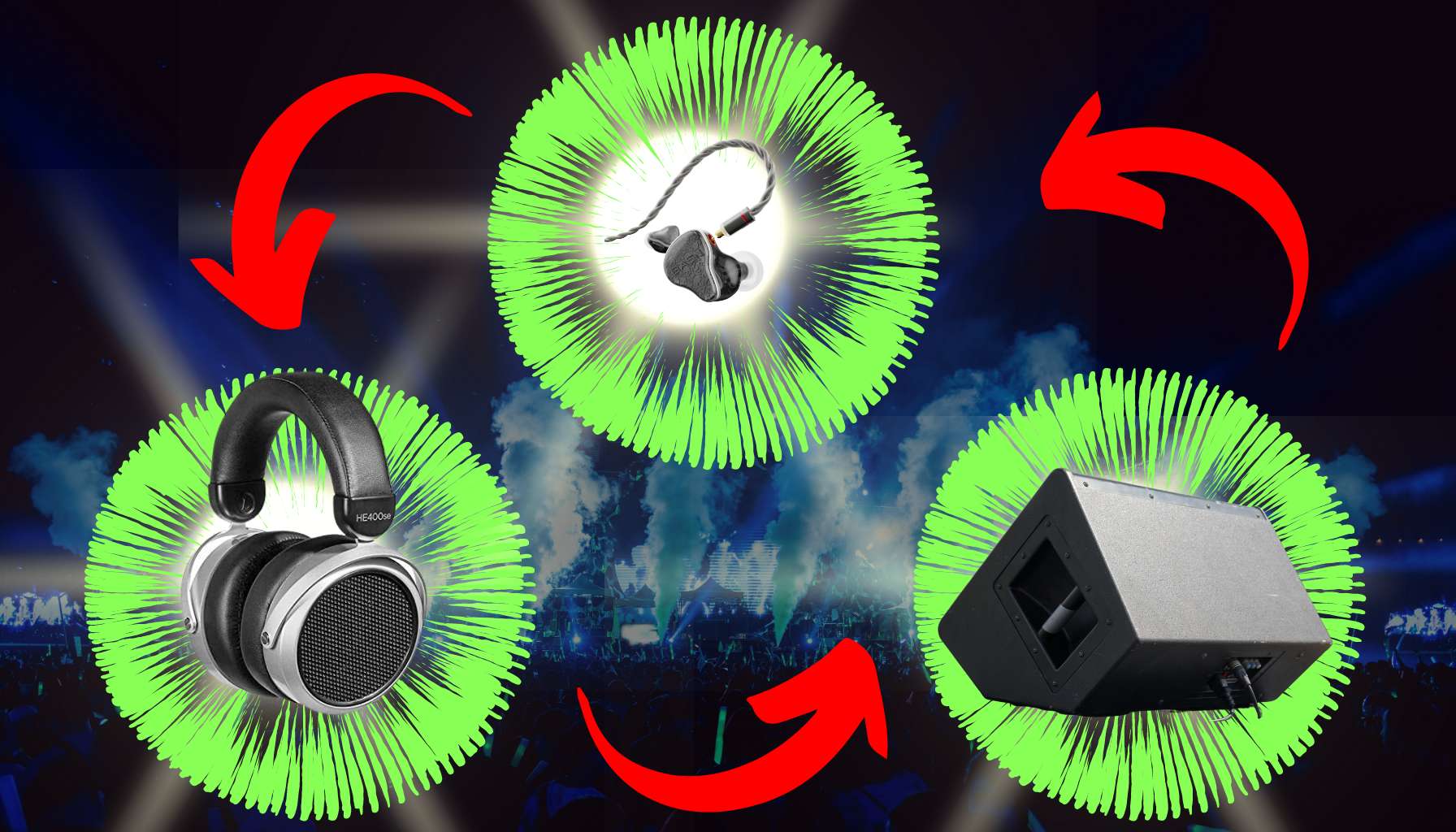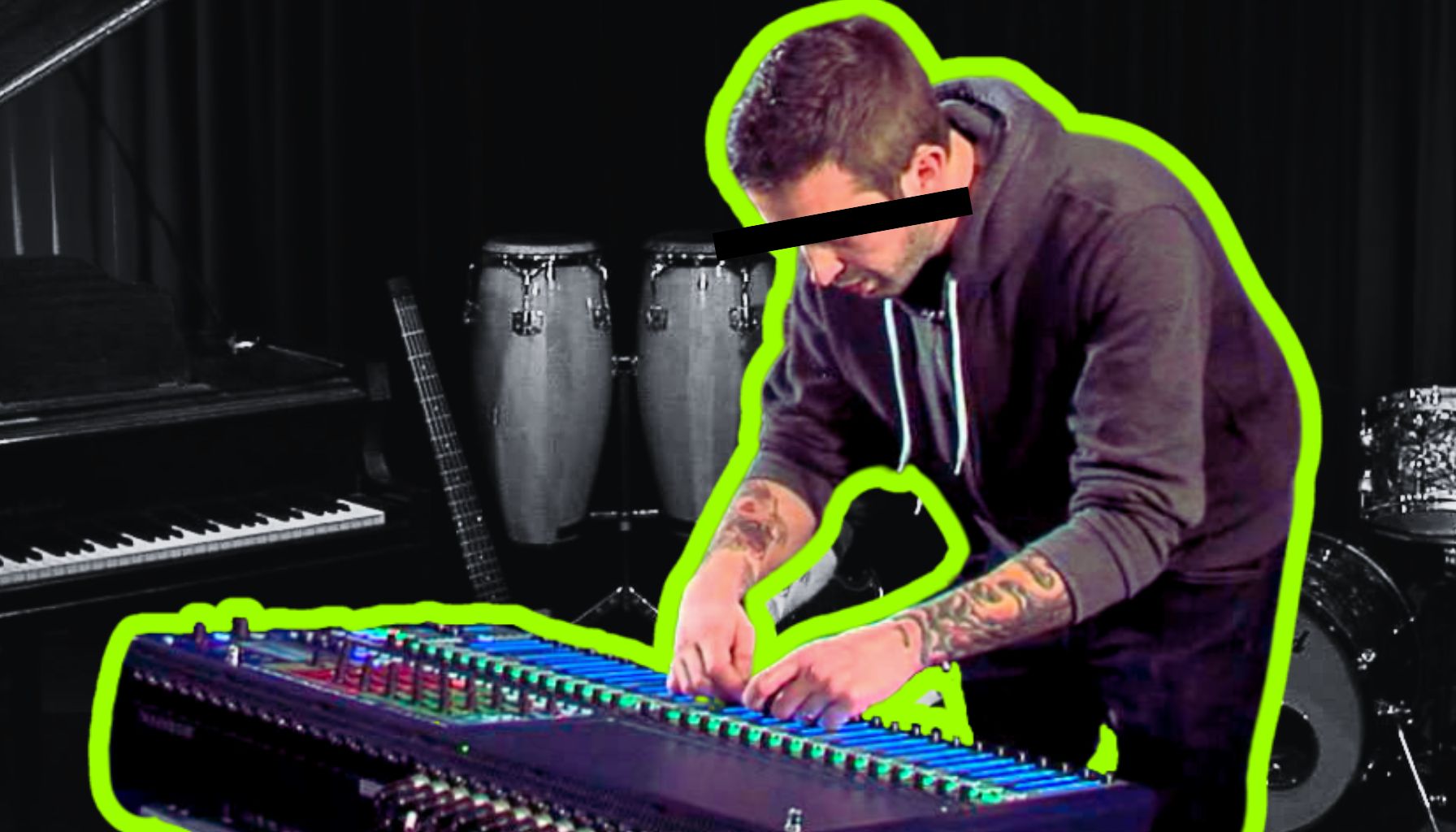Introduction
Hovering over the precipice of a live recording session, the gravity of capturing the unforgiving truth of a band’s raw performance hits you. It’s a high-wire act without a net, where every strum, beat, and riff hangs in the balance. To mitigate the mayhem, one must arm oneself with an arsenal of equipment essentials, as there’s no second take in the candid world of live sound. Let’s dive in, shall we?
Choosing the Right Microphones
Your mic selection is akin to casting actors in a play: pick the wrong lead, and your Shakespearean drama turns into a slapstick comedy. Sure, dynamic microphones are the rugged workhorses, reliable in the clamorous melee of drum kits and electric guitars. Condenser microphones, on the other hand, capture the nuance and soul of acoustics and vocals with the finesse of a Renaissance painter. In choosing your cast, remember – position is everything. Whether it’s the intimate proximity of close mic’ing or the spacious embrace of ambient setups, placement techniques for different instruments can make or break the show.
Multi-track Recording Gear
Now, let’s not forget about the backstage heroes – the mixing consoles and DAWs. They’re the puppeteers, pulling strings to ensure every instrument finds its place in the sonic tapestry. Field recorders stand as the steadfast scribes of sound, etching every note onto their digital scrolls. Ponder this: your console is not just a mass of knobs and sliders; it’s the helm of your ship, steering through the storm to capture the essence of the performance.
Monitoring and Headphone Mixes
Imagine the chaos if every band member lived in their own sound bubble. This, dear reader, is where monitoring and headphone mixes swoop in. Foldback feeds are the telepathic links amongst musicians, forging harmony in the cacophony. The key here is to manage bleed and fend off the feedback monsters lurking in the live set’s shadows. A tailored headphone mix for each band member is like giving each painter in a collective mural their own palette and canvas – it empowers individuality within unity.
With these equipment essentials locked down, you’re prepared to stand at the frontline, toe-to-toe with the challenge of live recording. But what comes next? As any seasoned sound samurai knows, the sword is only as sharp as its wielder.
In the following section, we’ll unsheathe recording techniques catered to each instrument – because let’s face it, a drum set isn’t a timid ukulele nor a bass guitar a delicate violin. We’re about to leap from the theoretical high ground into the trenches of tactical audio warfare. Get ready to mic drums with the precision of a sniper and dial guitar tones like a safecracker. Unveiling the secrets of capturing the essence of each instrument with surgical precision, we make certain that no note gets left behind.
Remember, in the grand theater of live recording, your equipment is both your sword and your shield. Wield it wisely, and you’ll emerge victorious with a recording that’s less of a sonic battleground and more of an auditory masterpiece that stands the test of time – and the fickle tastes of listeners everywhere.
Navigating the nuances of live band recording is akin to conducting an orchestra of feral cats. It’s a thrilling endeavor that, when executed correctly, captures the raw electricity of a performance in a way that’s as authentic as vinyl crackle. But let’s face the music—while the authenticity and energy of a live recording are unrivaled, this is no walk in the park. With the potential for spectacular successes comes the hair-raising risk of cacophonous failures, all in the unrepeatable, uneditable moment of now.
The Magic of Capturing a Live Performance
The live recording is the Houdini of the music world. It’s where premeditation meets spontaneity, where each note hangs in the air with the possibility of flourishing or flat-lining. And just like a magic show, there’s no chance for a redo. The allure lies in the ‘one and done’—the high wire act of nailing it in one take. It’s the goosebump-inducing mischief that happens when a drummer locks eyes with the guitarist at the climax of a solo, and they ride the crescendo wave to the shore together.
Benefits of Live Recording Over Multi-Track Studio Recordings
Sure, multi-tracking in a studio is the safety net—a controlled environment where each element is King. But in live recording? It’s a democracy of sound. The give-and-take between musicians isn’t just heard; it’s felt. This isn’t your polished, Pitchfork-praised studio sound. This is the nitty-gritty, the palpable presence that oozes from amps and strings, from drum skins and vocal cords. The energy that’s captured in a live setting is like bottled lightning—unpredictable and breathtaking.
Preparing for a Live Recording Session
Diving into the preparation for a live recording session, venue selection isn’t merely about square footage or acoustics. It’s about vibe—does the space say “rock ‘n’ roll” or “recital hall?” Your venue sets the scene for your sound; choose wisely. Once you’ve got your stage, the equipment setup and soundcheck become a prelude to greatness. Thorough preparation here can mean the difference between a standout track and a stand-down disaster.
It’s about working with the band to reach a shared sonic vision. Forget “too many cooks” – this kitchen thrives on collaboration. Every musician needs to be attuned not just to their instrument but to the ensemble’s collective heartbeat. Soundcheck is part rehearsal, part ritual, ensuring that when the lights go down, the sound goes up, just right.
Transitioning into Equipment Essentials
After the last note has echoed into silence and the band is buzzing, caught in the afterglow of the performance, you’re only halfway there. Your next act is to ensure that the electrical storm you’ve just captured translates outside the charged atmosphere of the venue. That transition is where we shimmy seamlessly into Equipment Essentials.
Choosing the right microphone is like selecting the right wine for dinner—it can elevate the entire experience. In live recordings, the dynamic versus condenser microphone debate is akin to a culinary face-off; each brings a different flavor to the feast. And placement? That’s a dance all on its own.
So, to records a guitar’s growl, a singer’s soulful croon, or the whispering ghost notes of a jazz brush, having the proper setup isn’t just necessary; it’s sacred. The subsequent section will not only gear you up technically but will set the stage for microphones, mixers, and monitors to play their parts in the grand recording ballet. Welcome to the world where gear meets gusto, and the resulting alchemy is the stuff of sonic legend.
In the steamy jungle of live band recording, bleed and noise interference are the incessant mosquitoes: bothersome, unwelcome, and always buzzing where they’re not wanted. But fear not sonic adventurer, for understanding how to combat these common live recording challenges is akin to packing the best bug spray money can buy.
Capturing Drums and Percussion
For drums, mic choice and placement are the lifeblood of the rhythm. It’s a dance between close miking to capture the snap of the snare, and ambient miking that grabs the room’s natural vibe. Like a drumming Goldilocks, engineers seek a balance that’s just right—ensuring the beats sit tight without going full-on “Animal” from the Muppets. Balancing the drum kit within the mix is more art than science, with subtleties ranging from mic angles to the mysterious art of damping.
Recording Guitars: Electric and Acoustic
Guitars next. With electric, think of your mic like a secret agent, positioning it for the perfect intel—it’s about snuggling up to the amp, finding that sweet spot where tone blooms and feedback fears to tread. Acoustic guitars, on the other hand, beg for space, a bit of room to let those wooden tones breathe and resonate fully. Clarity in the mix is the north star; whether it’s strummed chords or fingerstyle wizardry, the guitar’s voice needs to cut through like a hot knife through sonic butter.
Bass Guitar Recording Strategies
Enter the unsung hero: the bass guitar. Here, a blend of DI (Direct Input) signal with the amplified roar ensures the groove backbone is felt, not just heard. The goal is to harness the thump and growl in a warm, yet defined embrace, giving it enough room to groove without stepping on the other instruments’ metaphorical toes.
Microphone Techniques for Horns and Woodwinds
Moving to the brass and winds, it’s about spotlighting these shiny charmers without inviting cacophony to the party. Careful mic placement prevents bleeding other instruments into their sound, because when the trumpet’s solo gets gate-crashed by a rogue hi-hat, nobody wins. Spill is the arch-nemesis here, and it’s thwarted with clever positioning and possibly some sorcery.
Vocal Recording in a Live Band Setting
Finally, the centerpiece: vocals. The challenge is akin to framing the Mona Lisa in a crowded museum—you need to spotlight the singer without obstructing the view of the supporting cast. It’s a balancing act of gain, positioning, and maybe a silent prayer or two, orchestrating it all to ensure the singer’s performance connects with the audience—without a snare drum elbowing in.
With each instrument comfortably immortalized in digital form, it’s time to scoot over to the other side of the glass, where the real magic happens: sound engineering and mixing. This is where the raw sonic ingredients you’ve so meticulously harvested transform into a delectable auditory feast. It’s going from capture to captivate, melding disparate sounds into a seamless symphony that does more than impress—it impacts.
The subsequent section, Sound Engineering and Mixing, isn’t just a mere continuation—it’s the denouement, the endgame, where decisions made now will echo through speakers long after the final note has decayed. So buckle up, sound maestros, because now, it’s time to tweak, finesse, and sometimes wrestle that live energy into a mix that transcends the sum of its parts—an alchemistic pursuit that is part science, part art, and all passion.
After gracefully capturing the raw energy of a live performance and skillfully dodging the potential pitfalls in the recording phase, you’d think it’s time to take a bow. But hold those applause – there’s another act to this production. Editing and mixing a live band recording is like combing through a haystack, plucking out the golden needles, and then weaving them into an auditory gold cloth. It’s meticulous, but oh, when the fabric comes together, it’s magic to the ears.
Editing the Live Recording
Imagine sitting before your multi-track recordings, armed with nothing but your ears and a relentless pursuit of perfection. Your mission: to stitch together the best takes and sections, forging a piece of sonic artwork that is as authentic as it is mesmerizing. Editing is discipline in disguise. It’s making sure the guitar solo from take three and the drum fill from take six play nice together, despite being strangers before this moment.
A well-edited live band recording should still feel like you’re right there in the audience, pint in hand and head nodding to the beat. In a way, it’s a beautiful deception—preserving the illusion of a continuous performance while discreetly snipping away off beats and flubbed notes.
Mixing and Mastering the Live Tracks
Once you’ve pieced together the Frankenstein’s monster of your recordings, it’s time for a little alchemy — mixing and mastering. You’re now the mix wizard, entrusted with transforming the creature into a chart-climbing Prometheus. Your task is to achieve a sound that is as polished as a knight’s armor, but still retaining the heart and soul of a live performance.
A polished live sound mix requires leveling each instrument, garnishing with just enough effects to enhance, not mask, and EQing the tracks to a perfect pitch where nothing overpowers, yet everything has its moment in the limelight. Remember, the mix is like an ecosystem — every bug, bird, and buffalo matters to the balance.
Mastering is the final flourish, the sprinkling of fairy dust that raises the production from the mortal realm to the halls of Valhalla. It’s ensuring that every track sits at the right volume when you switch from playing Metallica to Mozart. It’s about consistency, clarity, and, dare we say, a smidgen of cosmic perfection.
The Holy Grail: Cohesion and Authenticity
What we’re really chasing after—isn’t just clarity or a thumping bass line. It’s about striking that delicate balance; a mix that’s cohesive yet brimming with the unrepeatable charm of a live performance. It’s like trying to capture lightning in a bottle – only here, the lightning is a bass guitar, and the bottle is your carefully crafted mix.
The upcoming Frequently Asked Questions section holds the promise of shedding more light on the conundrums that may plague even the most daring of live band recording adventurers. From the best practices for microphone gymnastics to preventing the great scourge of feedback, your burning questions are about to meet the cool waters of answers. Armed with a keen eye (and ear) for detail and a dauntless spirit for problem-solving, it’s almost time to turn the final page on this epic audio anthology.
Dealing with Bleed and Noise Interference
The bane of any live recording – bleed – is like that one uninvited party guest: it’s everywhere and often brings down the vibe. To tackle this, strategic mic placement is crucial. It’s about positioning those mics like a chess grandmaster, ensuring they capture the king without being toppled by the pawns. And while you may think isolating instruments altogether is the key, remember, a dose of bleed can actually enhance that live feel, injecting a shot of “you-are-there” adrenaline into your recording.
Addressing Acoustical Issues of the Venue
As for venue acoustics, some spaces are like fine wine – perfectly aged and enhancing everything within – while others are more, well… milk a week past its expiration date. Using acoustic treatment strategically doesn’t mean drowning the place in foam, but rather, it’s like dressing for the weather: appropriate, unobtrusive, and preventing any needless shivering or sweating from your recordings.
Troubleshooting Technical Hiccups on the Spot
And then there are the technical hiccups, those gremlins of the live recording process, eager to throw a wrench in the works. A wailing guitar amp or a feedback loop can pop up like unwanted browser ads, and handling these hiccups entails a cool head, a steady hand, and perhaps a touch of zen-like patience. Keeping cool under pressure isn’t just a good idea; it’s the musical equivalent of being a bomb disposal expert—with less actual exploding, hopefully.
Overcoming challenges in the live recording arena is an art form itself, a dance between maintaining the raw energy of the performance and ensuring you don’t end up with a recording that sounds like it was captured on a potato.
As our perilous venture through live recording hurdles smooths out, we begin to see the light at the end of the sound wave. It’s now time to venture beyond the recording stage, into the sonic alchemy of the post-recording process. This magical phase is where we polish those raw gems of audio into dazzling diamonds of aural delight.
Post-Recording Process
Alas, with the performances captured, it’s time to retreat to the studio sanctuary for editing and mixing, a process that’s more meticulous than a fussy cat grooming itself. We’re piecing together the best takes, tidying up any timing mishaps, and layering in that sprinkle of studio fairy dust.
In mixing and mastering the live tracks, we strive for a polished sound that pays homage to the live experience, akin to airbrushing a photo but leaving in that charming freckle. We’re now looking through our audio kaleidoscope, adjusting and fine-tuning until every color sings in harmony with the next, achieving that oh-so-coveted cohesive finish.
As you gear up for this next leap into post-production, pack your bags full of patience, precision, and those well-earned live recording battle scars. With every fader adjustment and plugin tweak, you’ll craft a mix that dazzles not only in its clarity but in its ability to transport listeners right into the front row of the best concert they never attended. Now, on to perfecting those live sounds in the editing suite, where the real wizardry happens.
When the stage is set, and every cable’s been triple-checked, therein lies the pivotal moment in the live band recording saga—capturing each instrument with precision and pizzazz. Recording techniques for the diverse ensemble of instruments in a live setting is like juggling flaming torches: exhilarating, a bit dangerous, and an absolute crowd-pleaser when done right.
FAQ
What are the key considerations when selecting microphones for a live recording session?
The choice of microphones for a live recording session should be based on the types of instruments and vocals being captured. Dynamic microphones are typically chosen for their durability and ability to handle high sound pressure levels, making them great for drums and electric guitars. Condenser microphones are favored for their sensitivity and precision, ideal for vocals and acoustic instruments. Placement is also crucial—close miking captures detail, while ambient miking provides a sense of space.
How do mixing consoles and digital audio workstations (DAWs) play a role in live recording?
Mixing consoles and DAWs are central to organizing and fine-tuning the sound during a live recording session. They allow sound engineers to balance levels, adjust equalization, and apply effects to each track, shaping the overall mix. Consoles act as the control center for signal routing and manipulation, while DAWs offer a platform for multitrack recording, editing, and post-production.
Why are monitoring and headphone mixes important in live band recording?
Monitoring systems and individual headphone mixes are crucial for allowing each musician to hear themselves and the other band members clearly during a live recording session. This personal mix helps maintain timing, harmony, and energy among the performers, reduces onstage noise, and minimizes feedback issues by keeping amplifier volumes at more manageable levels.
What makes capturing a live performance challenging compared to multi-track studio recording?
Capturing a live performance is challenging because it requires managing the complexities of a live sound environment, dealing with potential feedback, stage noise, audience sounds, and capturing the collective performance in a single take. Unlike studio recording, there is less control over individual instrument levels and separation, and limited opportunities for post-production corrections.
How does the choice of venue affect the quality of a live recording?
The choice of venue greatly impacts the sound quality and atmosphere of a live recording. A venue’s acoustics, size, and ambient noise all influence how the performance will sound when recorded. Selecting a venue that complements the style of music and the desired live sound experience is essential for a successful live recording.
How does one mitigate bleed and noise interference during live recording?
To mitigate bleed and noise interference, strategic microphone placement is essential. Directional microphones can be used to focus on the desired sound source and reject off-axis noise, while appropriate onstage monitoring can limit the need for high stage volumes. Acoustic treatments may also be used to control the sound within the venue.
How are drums and percussion typically captured in a live recording setting?
Drums and percussion are typically captured using a combination of close and ambient microphones. Close mics, such as dynamic or clip-on mics, are used to capture the individual sound of each drum, while ambient mics, like overhead condensers, are deployed to capture the overall kit and room sound. The balance between these mics contributes to a full and dynamic drum sound in the mix.
What role does post-production play in refining a live band recording?
Post-production plays a crucial role in refining a live band recording, allowing engineers to edit and mix the audio tracks. This phase involves aligning takes, adjusting levels, adding effects, and equalizing each track to achieve clarity and balance. Mastering the final mix ensures consistent playback across various listening platforms, enhancing the overall sound quality.
What is the best strategy for recording vocals during a live performance?
The best strategy for recording vocals during a live performance involves using a high-quality dynamic or condenser microphone with a cardioid polar pattern to isolate the singer’s voice from the rest of the band. Proper gain staging and microphone technique can also help minimize bleed from other instruments and ensure clear, present vocal capture in the mix.


